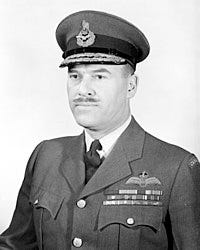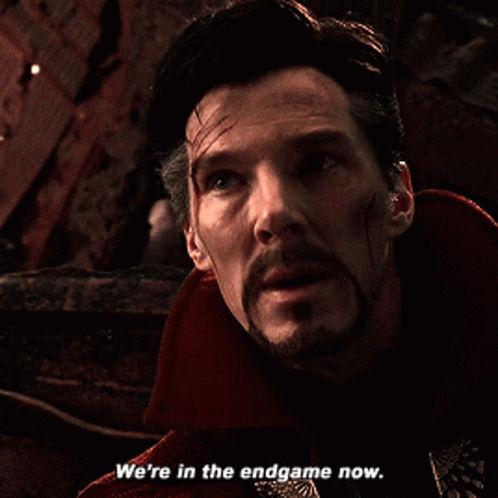First of all, a warm welcome to the 31 leaders that joined since last Sunday. I’m honored that there are now 2,187 of you out there that find this little intellectual endeavor of mine worthwhile.
If you’re new, this is The Leader's Digest, your weekly dose of stories, lessons, and tools to make you a better leader.
This Week, At A Glance:
One Quote: On the importance of action
One Story: On the importance of inaction (sometimes)
One Bonus: 5 words of a failed leader
One Quote:
“In any moment of decision, the best thing you can do is the right thing. The worst thing you can do is nothing.”
— Theodore Roosevelt
One Story:
JON NOTE: The world is…heavy right now. In light of this week’s events, it didn’t feel right to put pen to paper on a list of lofty, aspirational leadership lessons. So, instead, I’m sharing a story from 60 years that is very germane to the state of the world right now. A story that, I think, gives us reason to be hopeful. A story that reminds us that good people and good judgement will get humanity through rough patches.
With that out of the way, let’s dive in to the story of Canadian Air Marshal Charles Roy Slemon…
Who was Air Marshal Slemon?
For most of his military career, he was a standard military man. He joined the Royal Canadian Air Force (RCAF) in 1922 and, by WWII, he had moved up the ranks to become the Deputy Air Officer Commander-in-Chief of the RCAF Overseas.
Pretty impressive, but hardly story-worthy.
But where his life gets interesting is in 1957 when he became Deputy Commander in Chief of the North American Aerospace Defense Command (NORAD). NORAD, if you don’t know, is kind of a big deal. It’s a combined organization of the US and Canada that provides aerospace warning, air sovereignty, and protection for Northern America. And back in the early Cold War days, NORAD was an important security blanket for an entire continent that was on edge (rightfully so)
Now, the NORAD Commander and Deputy Commander were, and are, respectively, a US four-star general and a Canadian three-star general. Remember that detail, it’ll be important later.
Here’s where his story gets good/scary…
It’s October 1960.
In the main NORAD control site, the Cheyenne Mountain Complex, warning lights are going off everywhere. The systems were indicating that, at the BMEWS[1] site in Greenland, an Intercontinental Ballistic Missile (ICBM) attack from the USSR was possibly underway. In case it’s not obvious…this was a BIG DEAL.
BMEWS was a system built for early detection and warning of a nuclear missile attack, but the warnings didn’t give people that much time: 15 minutes, maybe 25 minutes, tops.
So BMEWS had detected a possible attack. What happened next?
Well, NORAD had a 5-point scale that dictated protocol in these situations (5 = End Game). The reports were Level 3, which the team in Cheyenne to contact NORAD headquarters, the US Joint Chiefs of Staff, the Canadian Chiefs of Staff Committee, and Strategic Air Command (SAC).
Now, the Cheyenne commander on duty at that time was Colonel Robert Gould, whose first call was to NORAD's Commander, US General Laurence Kuter. But there was a problem. General Kuter was on a plane at the time and couldn’t be reached.
Enter: Air Marshall Slemon. Deputy Commander of NORAD and #2 in command.
With Kuter out of pocket, Gould called Slemon. Oh, and while this game of phone-tag was happening, the alert level escalated from 3 to 4, and then 4 to 5.
At Level 5, Slemon had full authority to go all “fire ze missiles” right back at the USSR.
But he didn’t act. Huh? Why not?
Slemon had remembered a news report from the prior day, reporting on an incident at the United Nations headquarters in New York involving Soviet leader Nikita Khrushchev (it wasn’t the Shoe-Banging Incident, that would come later).
So, he asked NORAD’s Chief of Intelligence, Brigadier General Harris Hull: “Where’s Khrushchev?”
Hull replied that Khrushchev was still in New York City.
Now, an ICBM attack on the US while Khrushchev was in New York would kill Khrushchev. Slemon knew that, and knew that the human instinct for self-preservation would make it extremely unlikely for Khrushchev to order an attack while he was in the US.
So Slemon broke protocol. He essentially ignored the playbook for Level 5 alerts (i.e., “Fire Ze Missiles”) and contacted the BMEWS site directly.
When he was connected, he asked them questions about the signals, and…he asked them to go outside and report back on what they saw.
What did they see when they went outside?
Not 1,000 missiles zipping through the sky. But rather…the moon.
The BMEWS radar system had been detecting the rising moon and, due to a bug in the coding, was dropping digits in distance calculations and reporting large, distant objects (like, you know, the moon) as close-range threats.
Wait, the world almost ended because of a coding error?
Yeah, kinda.
But that’s not the point of this story.
The point of this story is that, even in the darkest moments, there’s reason to hope. There’s reason to trust in good judgement and in the goodness of 99.9% of all people. We’re all in this together. It’s easy, but fatal, to forget that for too long.
[1] The RCA 474L Ballistic Missile Early Warning System (BMEWS) was a United States Air Force Cold War early warning radar, computer, and communications system, for ballistic missile detection. The network of twelve radars, which was constructed beginning in 1958 and became operational in 1961, was built to detect a “mass ballistic missile attack launched on northern approaches [for] 15 to 25 minutes warning time.”
One Bonus:

This is generally good advice, but remember: Context matters.
If a person on your team is burned out and needs a break, then “that’s ok, I’ll do it” should come out of your mouth.
If a person on your team isn’t performing, then follow this advice.


